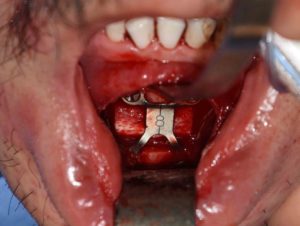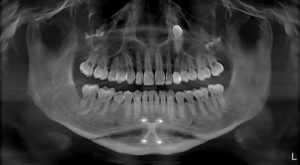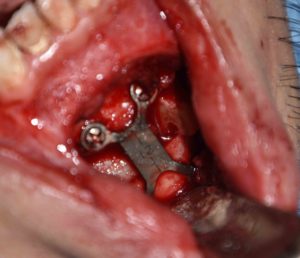Background: The sliding genioplasty is a well known chin augmentation technique for horizontal advancement of a short chin. It is used most commonly for the horizontally deficient bony chin. With these forward movements some vertical change can also be affected, either opening it slightly or even vertically shortening it.
A lesser known use of the bony genioplasty is to vertically lengthen the chin. This its actually the simplest movement of the inferior chin segment as it is opened up and elongated using the posterior bony wings as a cantilever. The amount of elongation is based on the vertical width of the bony gap created between the upper and lower segments. The gap is stabilized by a spanning titanium plate with two screws above and below for form fixation. When the bony gap gets to 8mm to 10mms an interpositional bone graft is used to ensure bony healing.
How much one needs to aesthetically lengthen the chin can be determined by preoperatively opening the jaw, find the best chin lengthening effect and then measuring the distance between the upper and lower teeth edges. (minus any upper incised overbite) If the vertical distance exceeds 10mm to 12mms, one will ned to consider a two-stage vertical chin lengthening approach.



Interestingly at 20mms of vertical chin lengthening, no lower lip incompetence of strains occurred. Presumably this was because it was a staged bony lengthening approach.
Highlights:
- Vertical lengthening genioplasty lengthens the lower third of the face by an opening wedge osteotomy.
- When the vertical lengthening of the chin is at 8 to 10mms a cadaveric interpositional bone graft is needed for bony healing
- A second vertical lengthening genioplasty can be successfully done after the first one with a final lower third of the face increase of 20mms.
Dr. Barry Eppley
Indianapolis, Indiana


